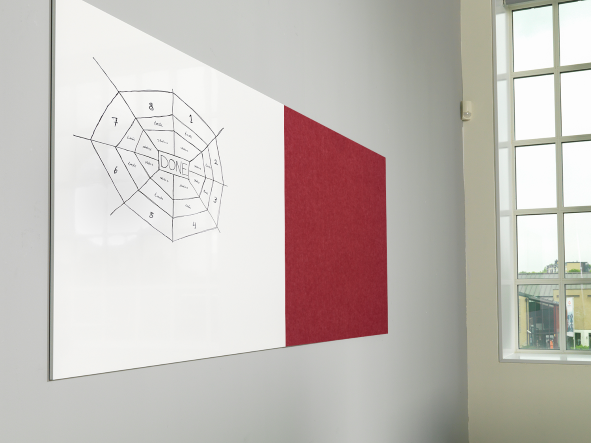This is how you get your infoboard in the right format ...
There are a few things to consider when measuring and determining the infoboard dimensions. A frameless infoboard is manufactured to the millimeter. Therefore please enter all dimensions in millimeters (mm).
> Your infoboard should cover the wall completely.
Measure the wall height and width in several places. Because walls are not the same width at every point. Ceilings are not the same height everywhere. If your infoboard is to extend over the entire width and/or height of the wall, a tolerance of 10 mm on each side (20 mm in total). This tolerance is necessary to compensate for any differences in height and width.
> Your infoboard only partially covers the wall.
Please let us know the desired format in millimeters.
However, if the infoboard should extend over either the entire width or height of the wall
If you want to extend the range, please take into account the above notes on tolerance
(full-surface information panel).
> Your infoboard should have one or more cut-outs e.g. for sockets, displays, openings for operating elements
Basically, when dimensioning, it is better to give us too much information than too little.
We need the following information from you:
- The distance side(s) infoboard - center/side(s) cutout
- The distance bottom/top edge infoboard - center/side(s) cutout
- Dimensions of the cutout: height x width, possibly radius, diameter
- The radius of a rounded corner
- For the cut-out for a display: Measure the display yourself (incl. depth of the Dispalys) - don't just take the manufacturer's measurements! The information about the radius of the corners is especially important (see illustration below). Please indicate all specifications in millimeters (mm).
To illustrate all the information, we recommend that you draw a sketch of the entire situation. Please enter all measurements in millimeters (mm). Furthermore we can get a better picture of the situation with a photo.
> Advice on installation in advance
The infoboard hangs securely and firmly on the wall if the wall is flat (no curvatures and hollow areas). Only in this way can the magnetic wall mount develop its full holding power.
If your wall is uneven, it is recommended to align the magnetic wall brackets with spacers.






